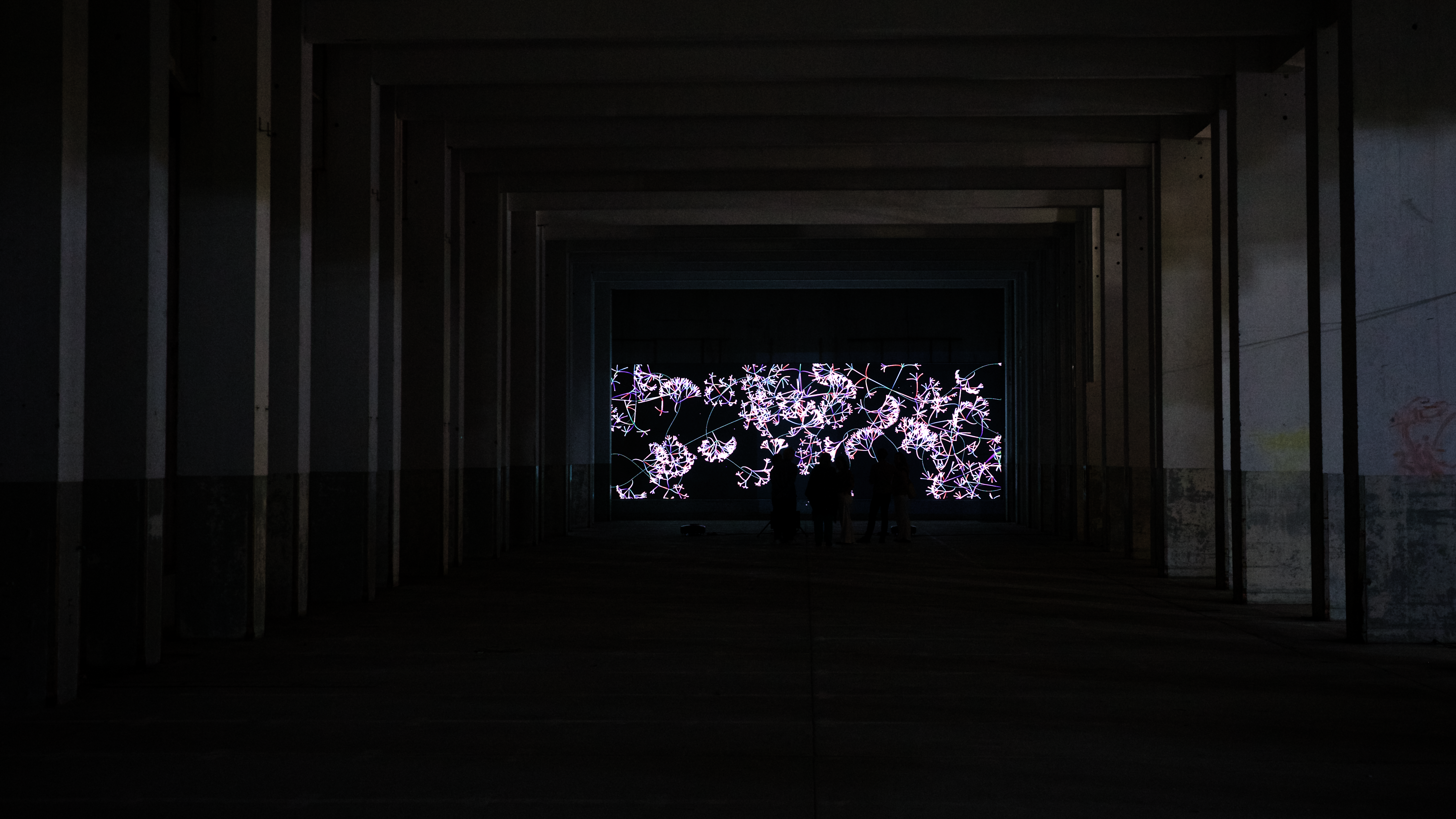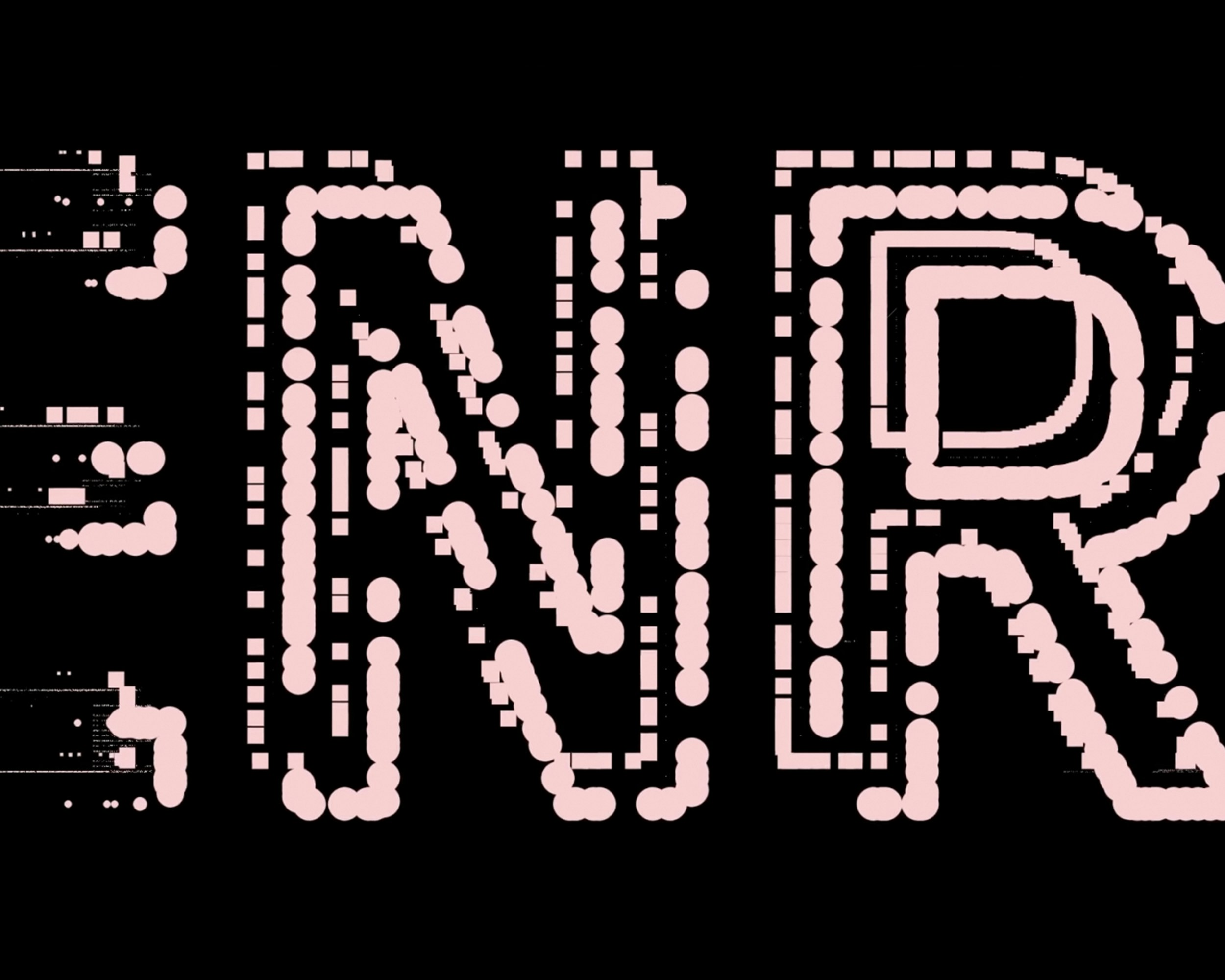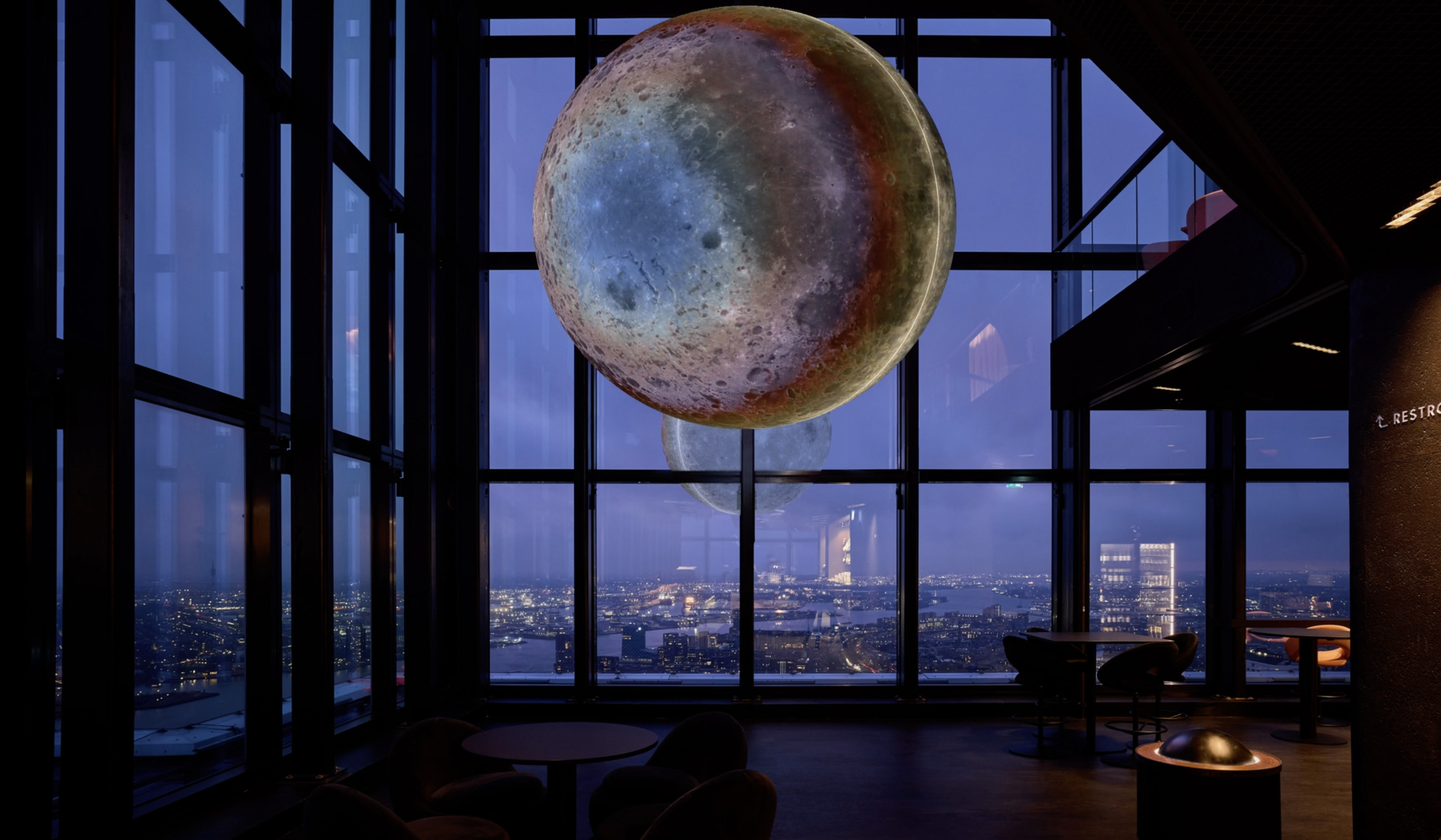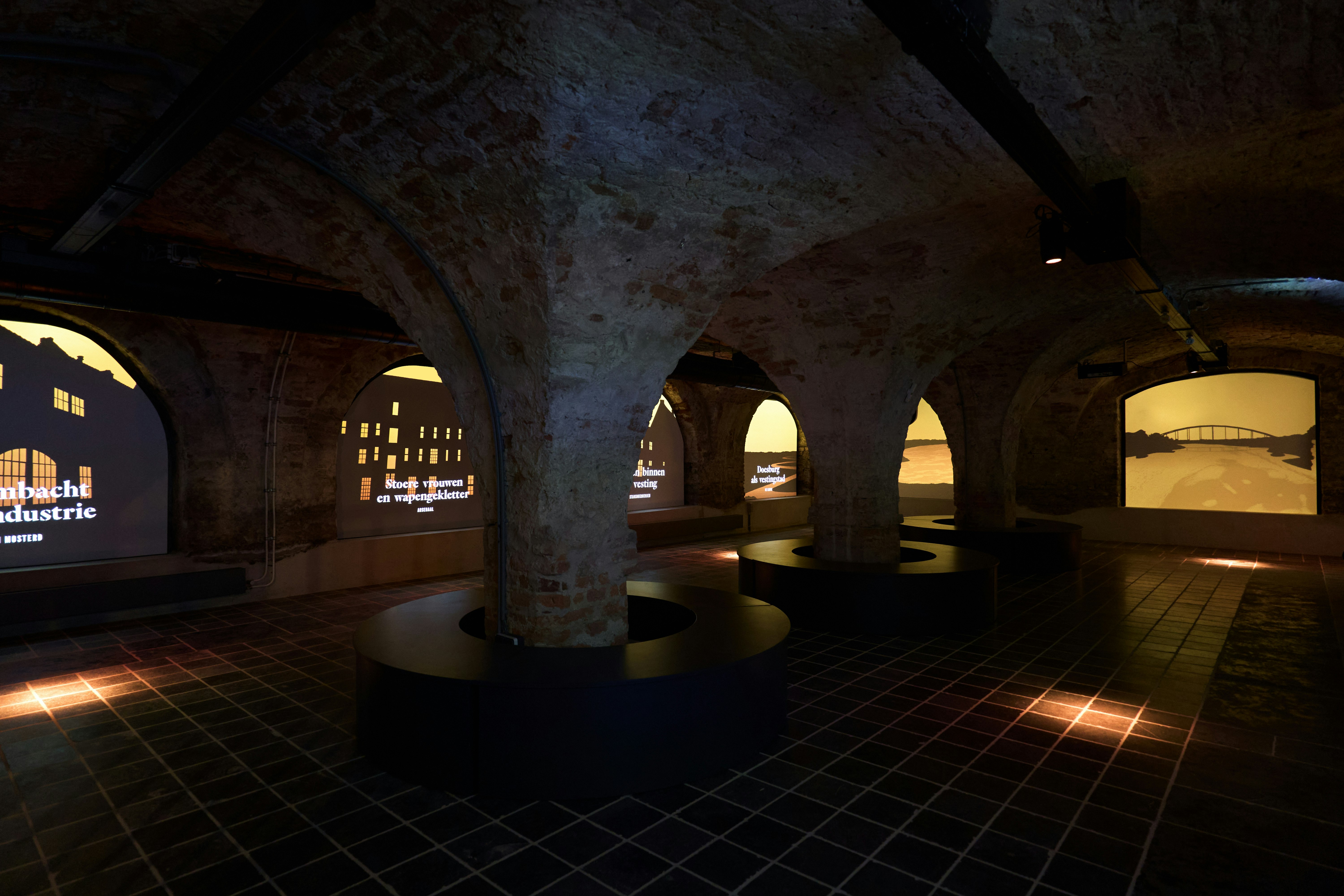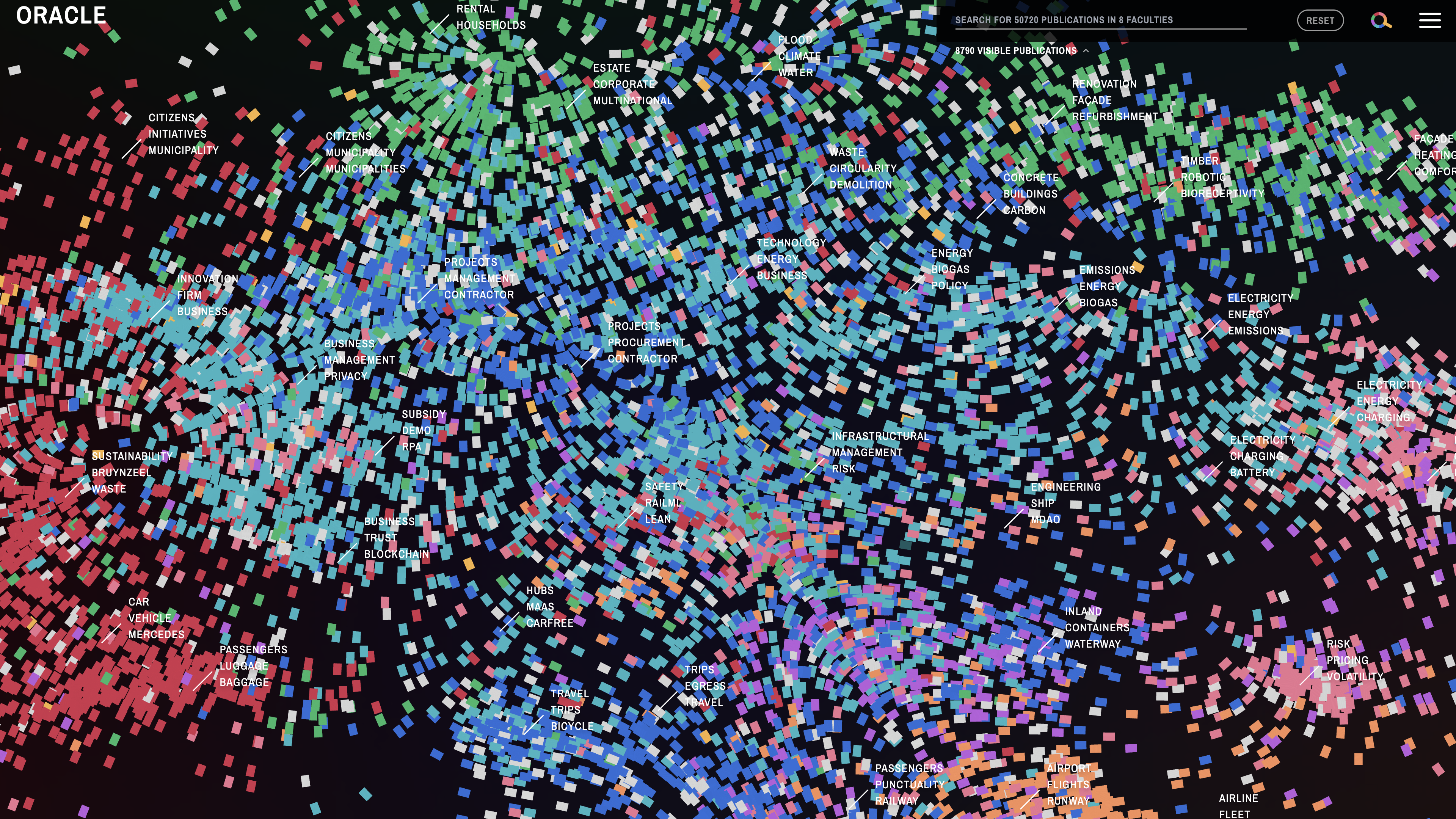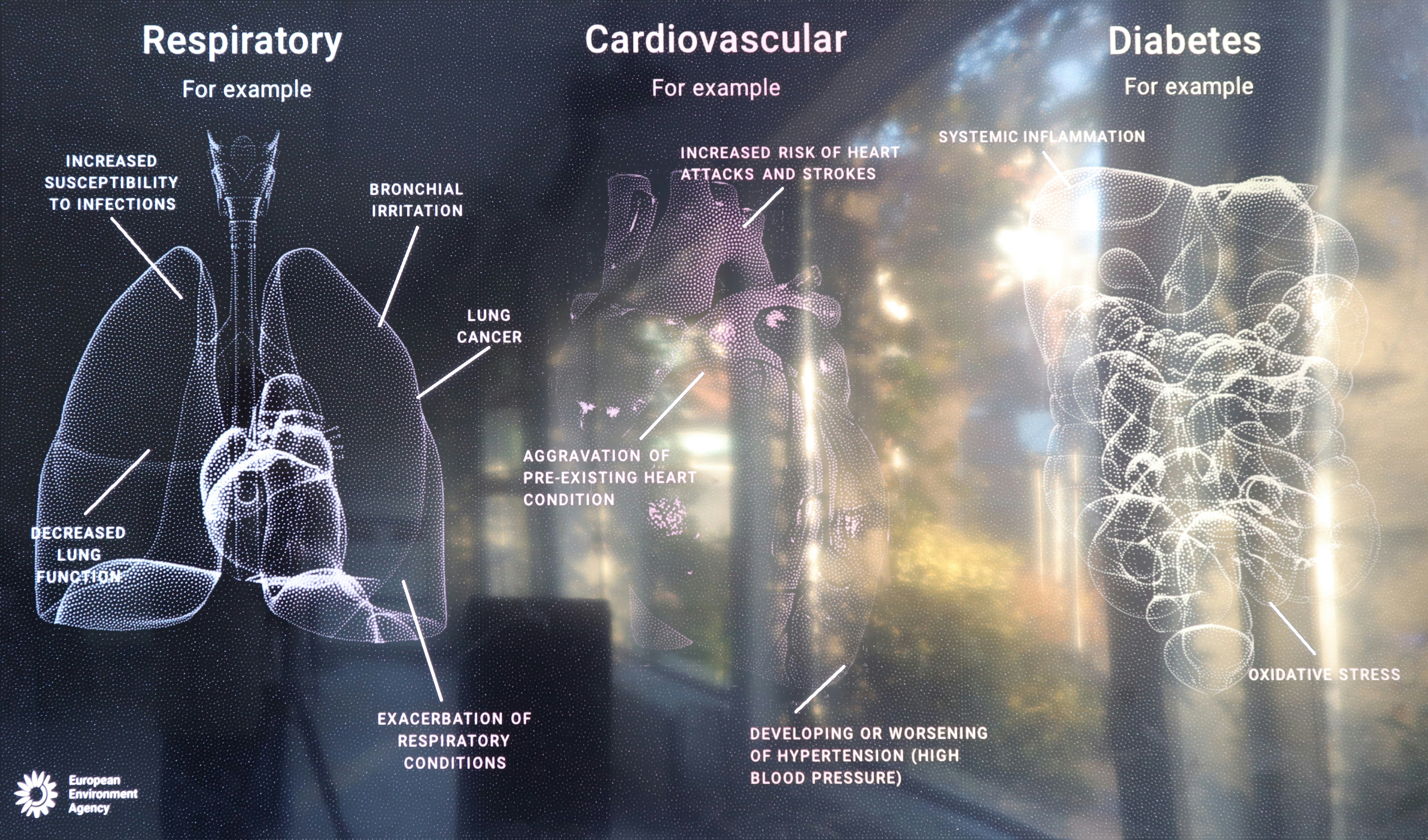In a process of designing, building, testing and customizing, the architects developed a refined but robust glass brick façade. The material use of the façade and ground level, the rhythm and the composition refer in a contemporary way to the architecture of the surroundings.
Can technology, social security and atmosphere reinforce each other in an architectural design? The Willem II passage is a new connection that connects the city center of Tilburg with De Spoorzone development area.
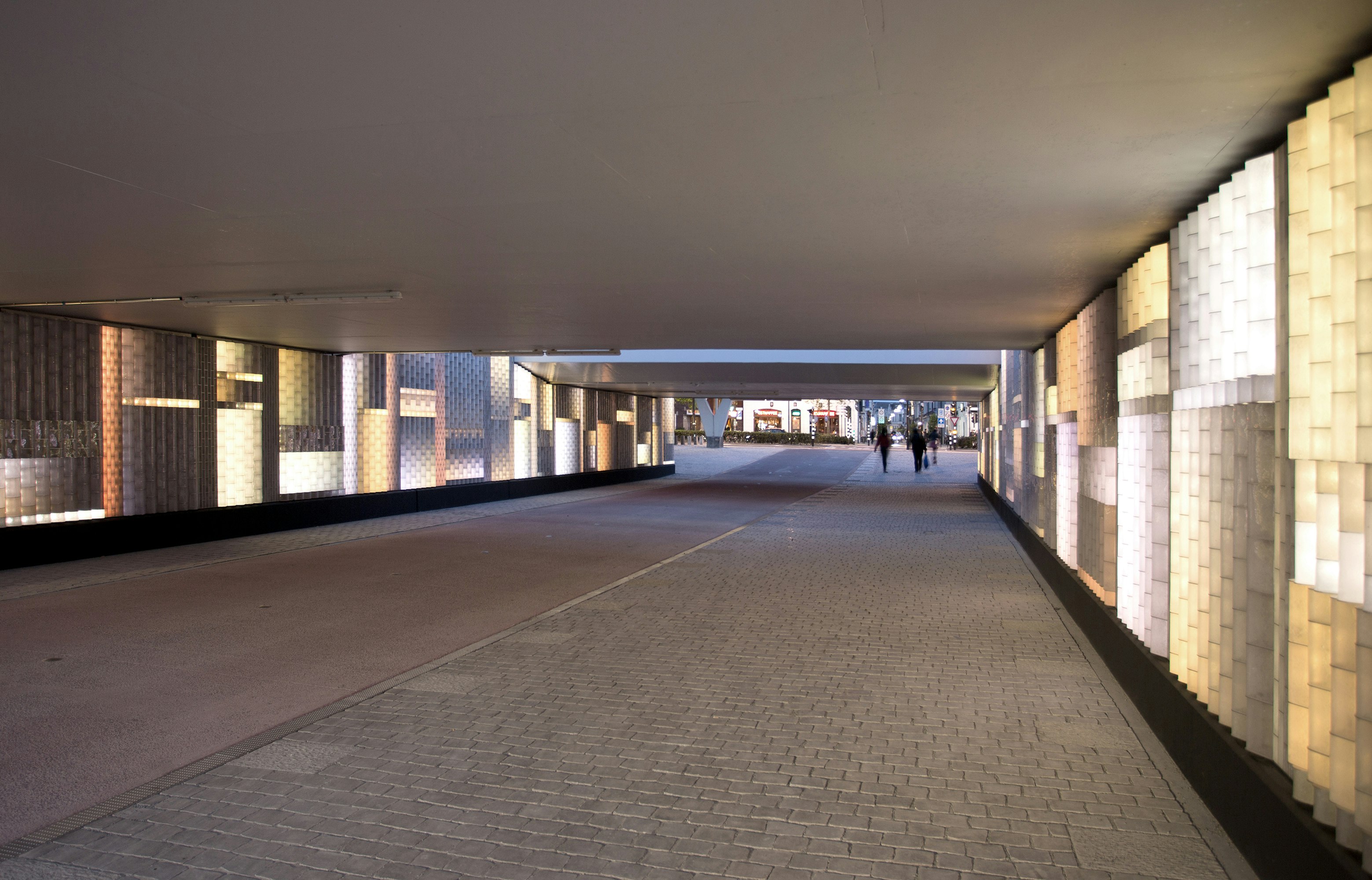 Passage with illuminated glass bricks on both sides
Passage with illuminated glass bricks on both sides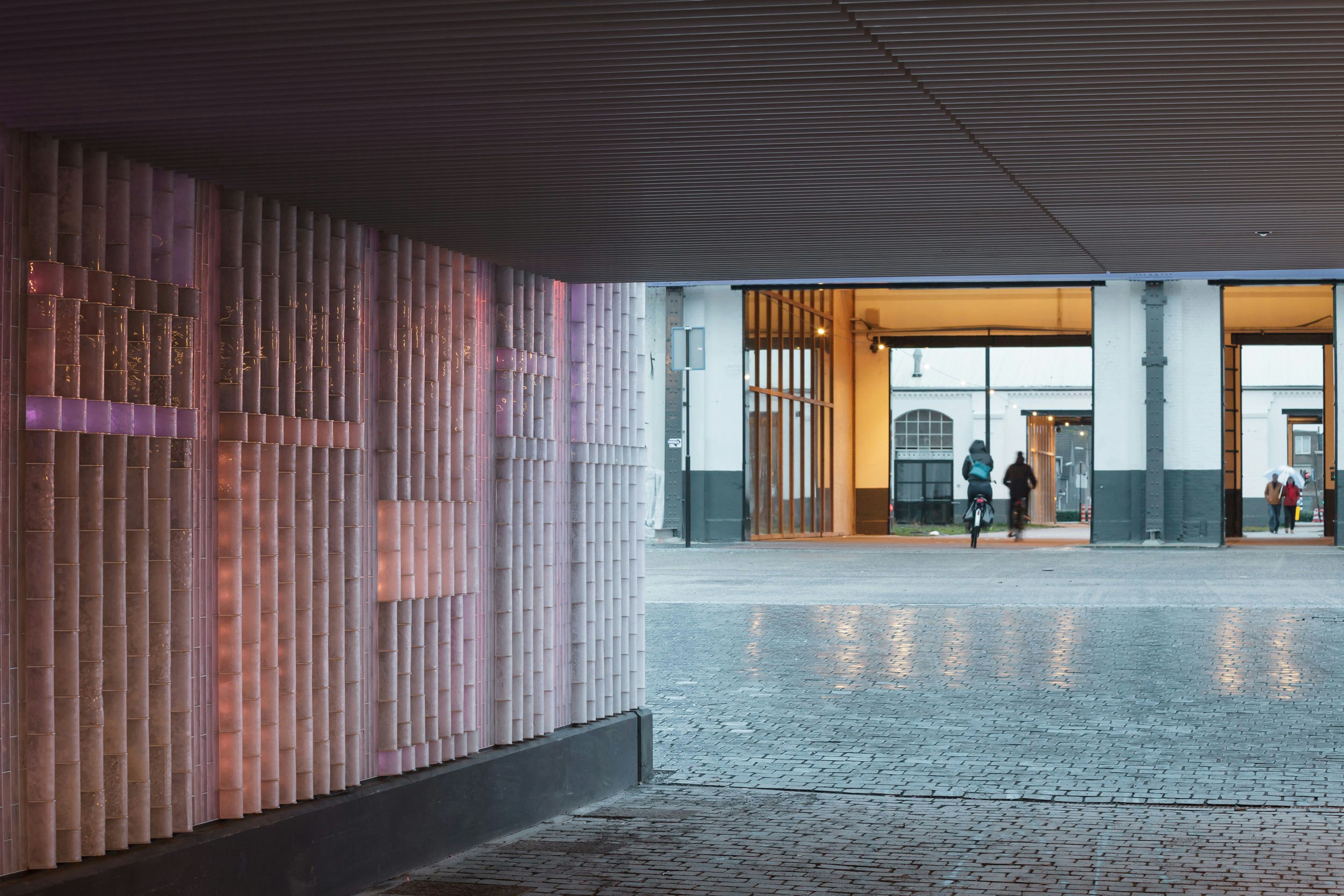 Passage with illuminated glass bricksPhoto: Stijn Boellaert
Passage with illuminated glass bricksPhoto: Stijn Boellaert Passage with illuminated glass bricks, view towards center of TilburgPhoto: Stijn Boellaert
Passage with illuminated glass bricks, view towards center of TilburgPhoto: Stijn Boellaert Derail of illuminated glass bricksPhoto: Stijn Boellaert
Derail of illuminated glass bricksPhoto: Stijn Boellaert Architectural quality also when lights are offPhoto: Stijn Boellaert
Architectural quality also when lights are offPhoto: Stijn Boellaert Passage with illuminated glass bricksPhoto: Stijn Boellaert
Passage with illuminated glass bricksPhoto: Stijn Boellaert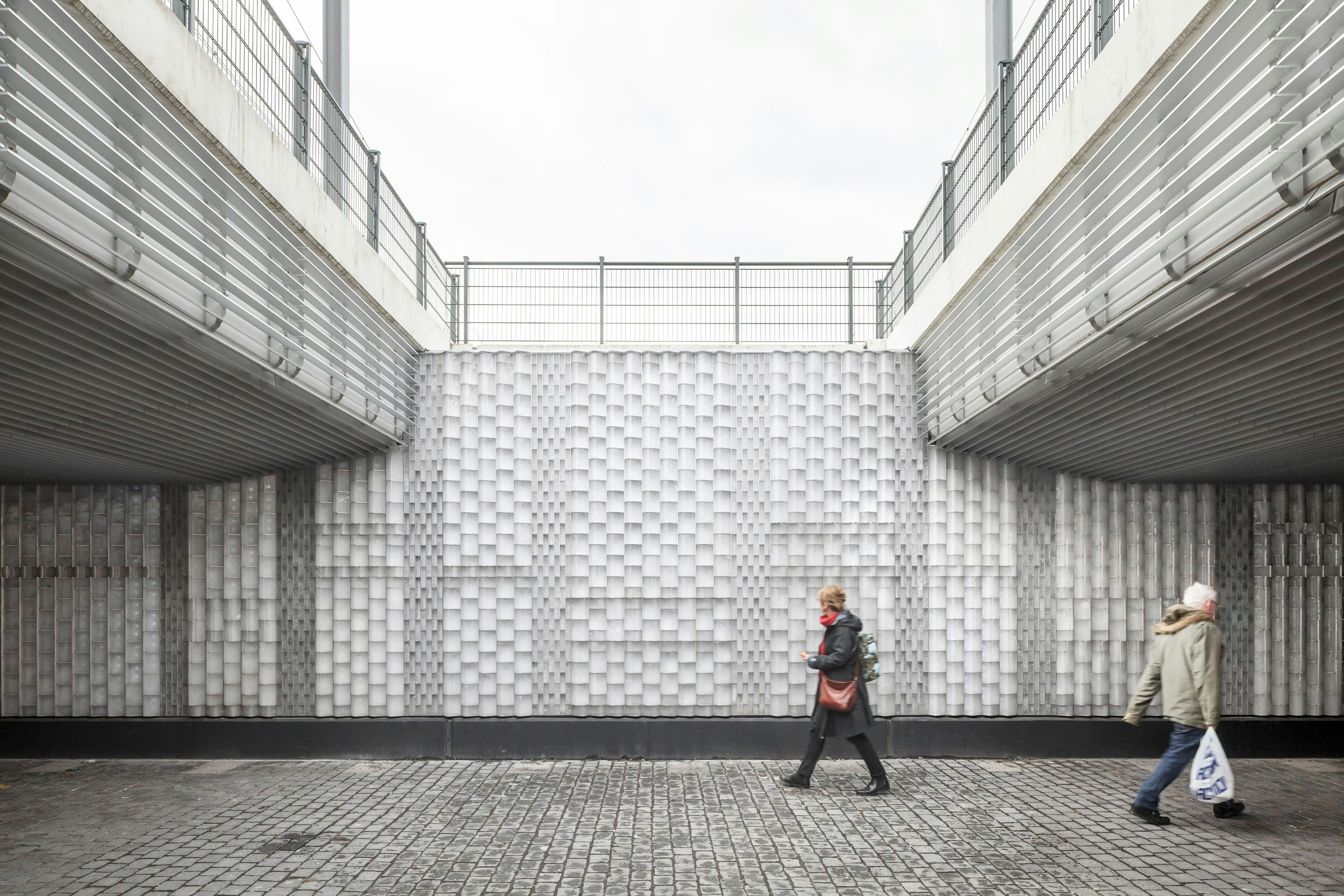 Architectural quality when lights are off or very dimmedPhoto: Stijn Boellaert
Architectural quality when lights are off or very dimmedPhoto: Stijn Boellaert Passage with illuminated glass bricks on both sides
Passage with illuminated glass bricks on both sides Passage with illuminated glass bricksPhoto: Stijn Boellaert
Passage with illuminated glass bricksPhoto: Stijn Boellaert Passage with illuminated glass bricks, view towards center of TilburgPhoto: Stijn Boellaert
Passage with illuminated glass bricks, view towards center of TilburgPhoto: Stijn Boellaert Derail of illuminated glass bricksPhoto: Stijn Boellaert
Derail of illuminated glass bricksPhoto: Stijn Boellaert Architectural quality also when lights are offPhoto: Stijn Boellaert
Architectural quality also when lights are offPhoto: Stijn Boellaert Passage with illuminated glass bricksPhoto: Stijn Boellaert
Passage with illuminated glass bricksPhoto: Stijn Boellaert Architectural quality when lights are off or very dimmedPhoto: Stijn Boellaert
Architectural quality when lights are off or very dimmedPhoto: Stijn Boellaert Passage with illuminated glass bricks on both sides
Passage with illuminated glass bricks on both sides Passage with illuminated glass bricksPhoto: Stijn Boellaert
Passage with illuminated glass bricksPhoto: Stijn Boellaert Passage with illuminated glass bricks, view towards center of TilburgPhoto: Stijn Boellaert
Passage with illuminated glass bricks, view towards center of TilburgPhoto: Stijn Boellaert Derail of illuminated glass bricksPhoto: Stijn Boellaert
Derail of illuminated glass bricksPhoto: Stijn Boellaert Architectural quality also when lights are offPhoto: Stijn Boellaert
Architectural quality also when lights are offPhoto: Stijn Boellaert Passage with illuminated glass bricksPhoto: Stijn Boellaert
Passage with illuminated glass bricksPhoto: Stijn Boellaert Architectural quality when lights are off or very dimmedPhoto: Stijn Boellaert
Architectural quality when lights are off or very dimmedPhoto: Stijn Boellaert Passage with illuminated glass bricks on both sides
Passage with illuminated glass bricks on both sides Passage with illuminated glass bricksPhoto: Stijn Boellaert
Passage with illuminated glass bricksPhoto: Stijn Boellaert Passage with illuminated glass bricks, view towards center of TilburgPhoto: Stijn Boellaert
Passage with illuminated glass bricks, view towards center of TilburgPhoto: Stijn Boellaert Derail of illuminated glass bricksPhoto: Stijn Boellaert
Derail of illuminated glass bricksPhoto: Stijn Boellaert Architectural quality also when lights are offPhoto: Stijn Boellaert
Architectural quality also when lights are offPhoto: Stijn Boellaert Passage with illuminated glass bricksPhoto: Stijn Boellaert
Passage with illuminated glass bricksPhoto: Stijn Boellaert Architectural quality when lights are off or very dimmedPhoto: Stijn Boellaert
Architectural quality when lights are off or very dimmedPhoto: Stijn Boellaert Passage with illuminated glass bricks on both sides
Passage with illuminated glass bricks on both sides Passage with illuminated glass bricksPhoto: Stijn Boellaert
Passage with illuminated glass bricksPhoto: Stijn Boellaert Passage with illuminated glass bricks, view towards center of TilburgPhoto: Stijn Boellaert
Passage with illuminated glass bricks, view towards center of TilburgPhoto: Stijn Boellaert Derail of illuminated glass bricksPhoto: Stijn Boellaert
Derail of illuminated glass bricksPhoto: Stijn Boellaert Architectural quality also when lights are offPhoto: Stijn Boellaert
Architectural quality also when lights are offPhoto: Stijn Boellaert Passage with illuminated glass bricksPhoto: Stijn Boellaert
Passage with illuminated glass bricksPhoto: Stijn Boellaert Architectural quality when lights are off or very dimmedPhoto: Stijn Boellaert
Architectural quality when lights are off or very dimmedPhoto: Stijn Boellaert Passage with illuminated glass bricks on both sides
Passage with illuminated glass bricks on both sides Passage with illuminated glass bricksPhoto: Stijn Boellaert
Passage with illuminated glass bricksPhoto: Stijn Boellaert Passage with illuminated glass bricks, view towards center of TilburgPhoto: Stijn Boellaert
Passage with illuminated glass bricks, view towards center of TilburgPhoto: Stijn Boellaert Derail of illuminated glass bricksPhoto: Stijn Boellaert
Derail of illuminated glass bricksPhoto: Stijn Boellaert Architectural quality also when lights are offPhoto: Stijn Boellaert
Architectural quality also when lights are offPhoto: Stijn Boellaert Passage with illuminated glass bricksPhoto: Stijn Boellaert
Passage with illuminated glass bricksPhoto: Stijn Boellaert Architectural quality when lights are off or very dimmedPhoto: Stijn Boellaert
Architectural quality when lights are off or very dimmedPhoto: Stijn Boellaert Passage with illuminated glass bricks on both sides
Passage with illuminated glass bricks on both sides Passage with illuminated glass bricksPhoto: Stijn Boellaert
Passage with illuminated glass bricksPhoto: Stijn Boellaert Passage with illuminated glass bricks, view towards center of TilburgPhoto: Stijn Boellaert
Passage with illuminated glass bricks, view towards center of TilburgPhoto: Stijn Boellaert Derail of illuminated glass bricksPhoto: Stijn Boellaert
Derail of illuminated glass bricksPhoto: Stijn Boellaert Architectural quality also when lights are offPhoto: Stijn Boellaert
Architectural quality also when lights are offPhoto: Stijn Boellaert Passage with illuminated glass bricksPhoto: Stijn Boellaert
Passage with illuminated glass bricksPhoto: Stijn Boellaert Architectural quality when lights are off or very dimmedPhoto: Stijn Boellaert
Architectural quality when lights are off or very dimmedPhoto: Stijn Boellaert
LEDs are integrated into each glass brick, which can be controlled at pixel level according to color and intensity. The light patterns respond to passersby and accentuate the tactility of the passage. The programming of the light patterns adapts to the time, the season, the weather or for special events. The lighting design emphasizes the architecture, and does not treat the walls as a screen, but as architectural units that come to life.
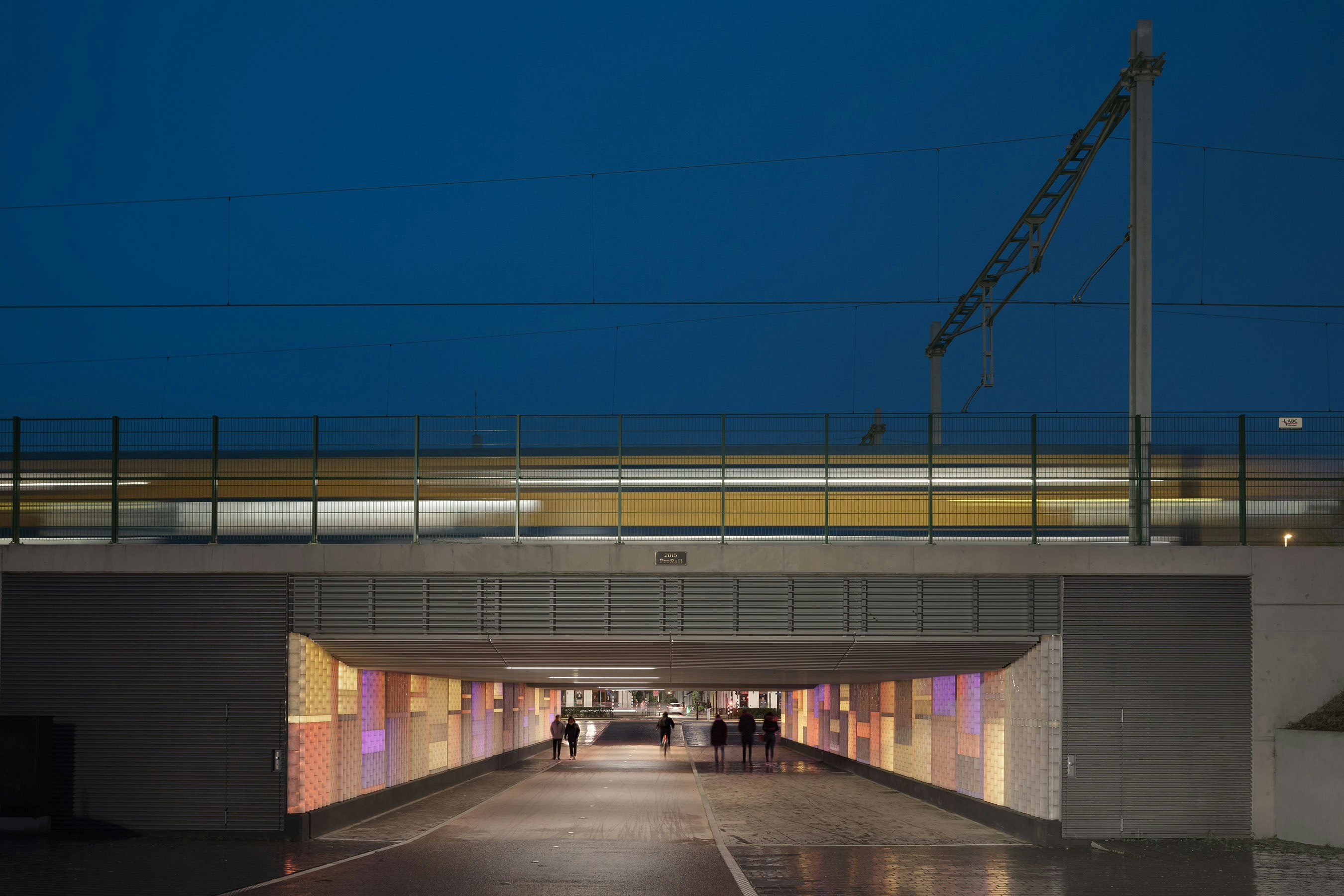 Photo: Stijn Boellaert
Photo: Stijn Boellaert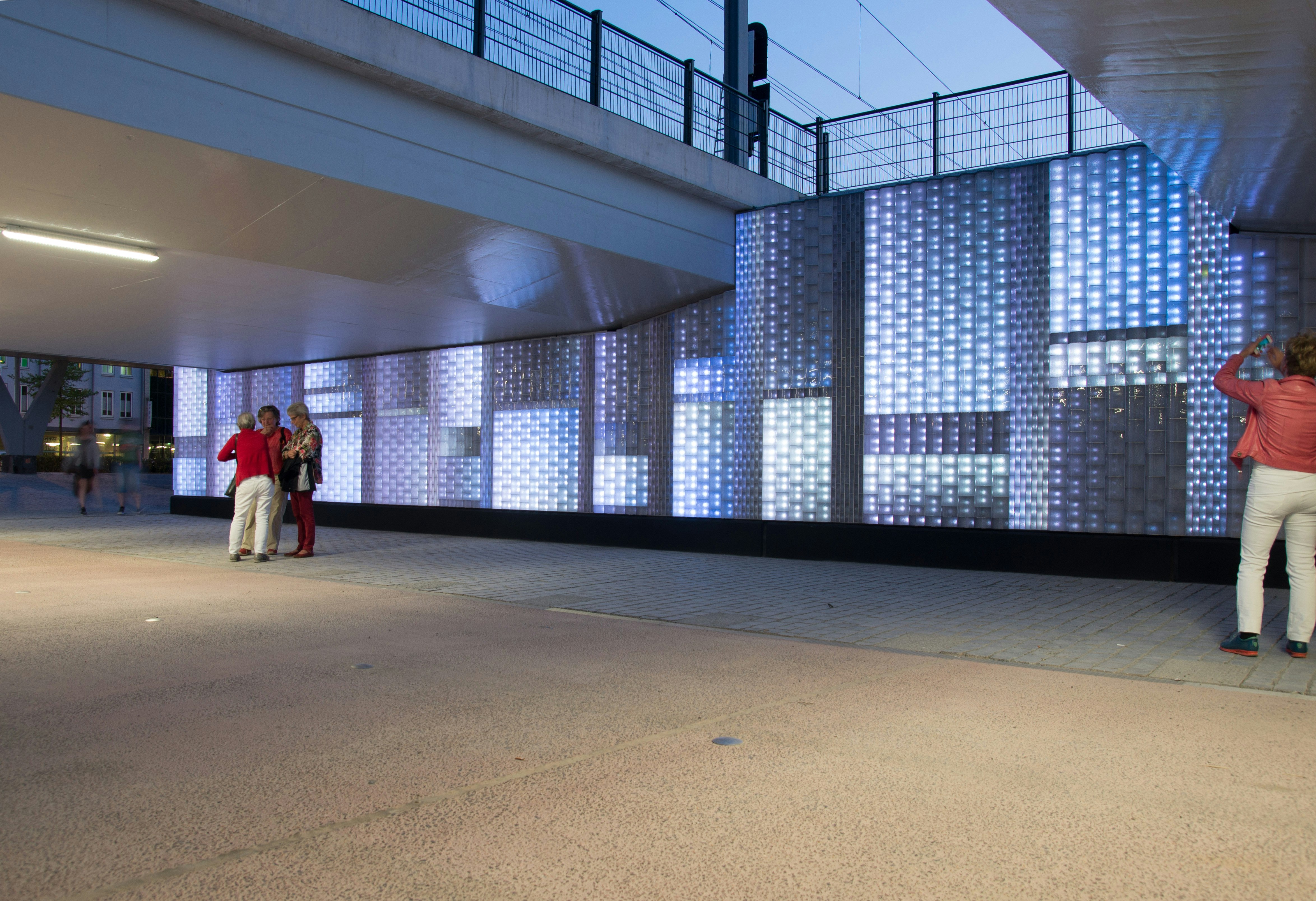
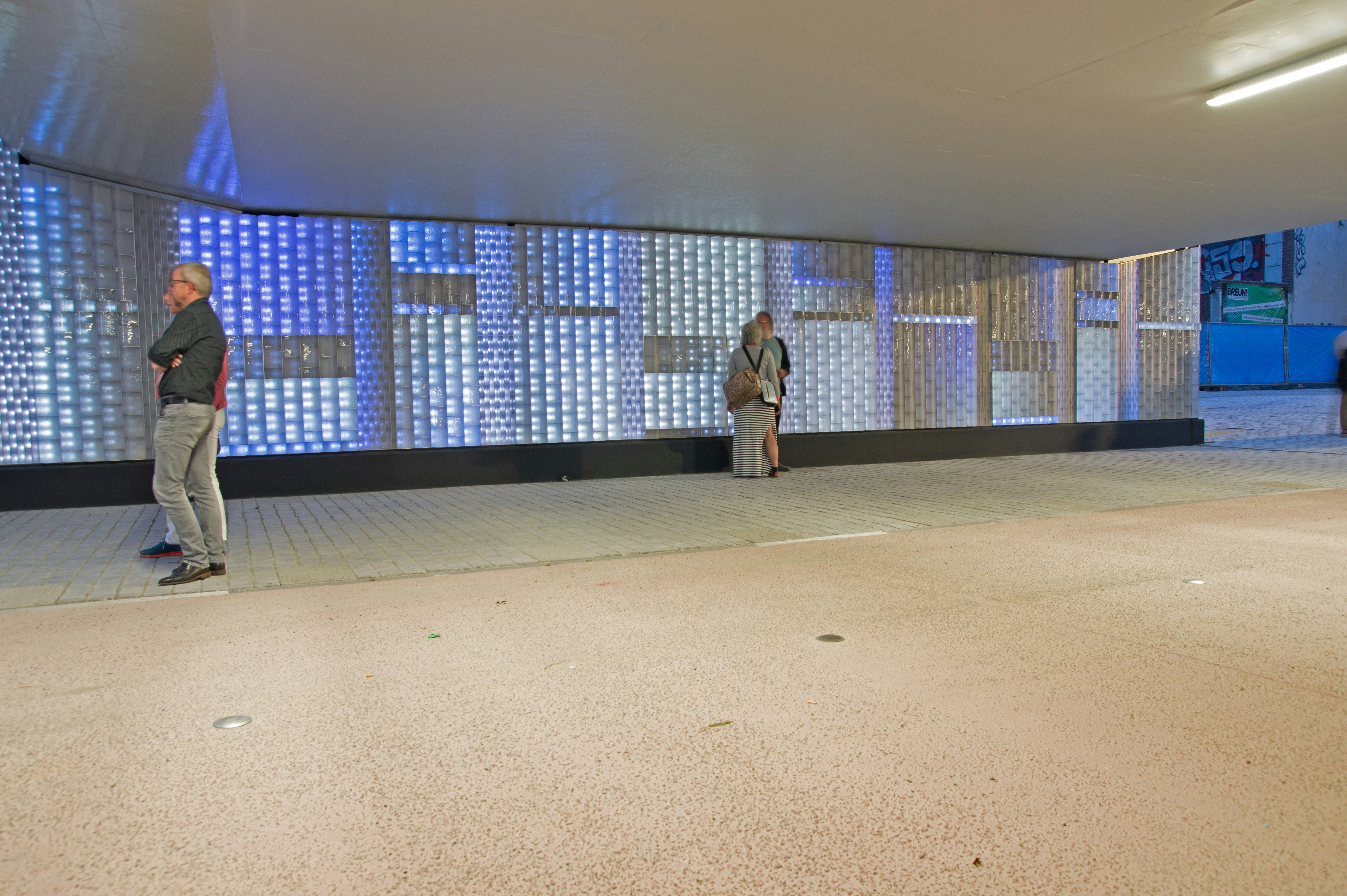
 Photo: Stijn Boellaert
Photo: Stijn Boellaert

 Photo: Stijn Boellaert
Photo: Stijn Boellaert

 Photo: Stijn Boellaert
Photo: Stijn Boellaert

 Photo: Stijn Boellaert
Photo: Stijn Boellaert

 Photo: Stijn Boellaert
Photo: Stijn Boellaert

 Photo: Stijn Boellaert
Photo: Stijn Boellaert

The interactivity operates in the background and joins the architecture. This makes the passage a natural part of the public network in the city and avoids the passage becoming obsolete due to the aging of its technology. The Willem II passage is an important public connection. The total design therefore focuses on public significance and cultural sustainability. The whole must leave a lasting impression and after twenty or thirty years just as interesting as immediately after completion. Familiar, self-evident and robust, but innovative, rich and refined. Built to Last.
Controlled by an app
The city can control the lights, adjust themes for special events, set special colours themselves via a custom-made webapp. The app gives a preview of the selected effect and also allow you to preview the settings in the real passage for 20 seconds.
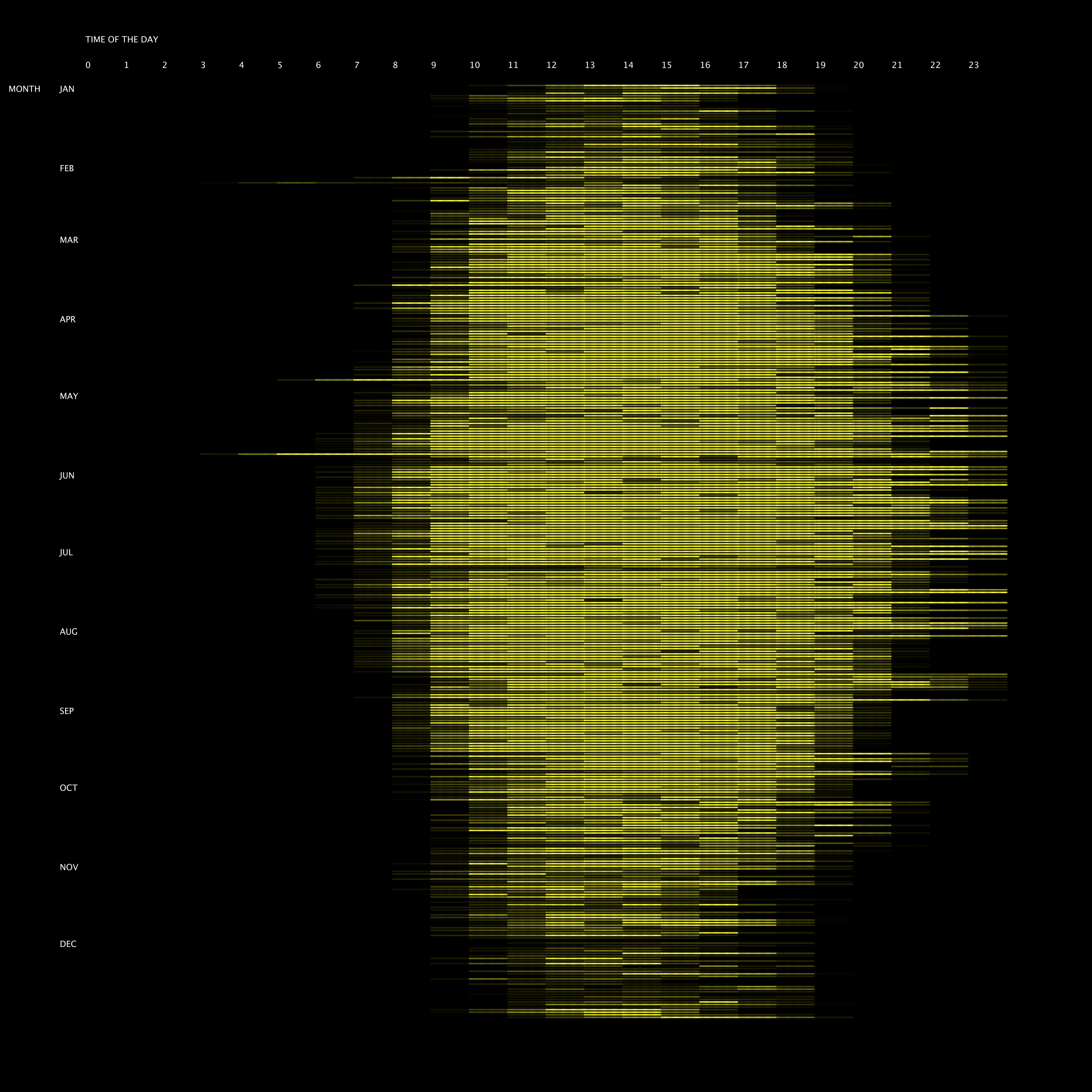 Visualization of sun hours above the passage in Tilburg
Visualization of sun hours above the passage in Tilburg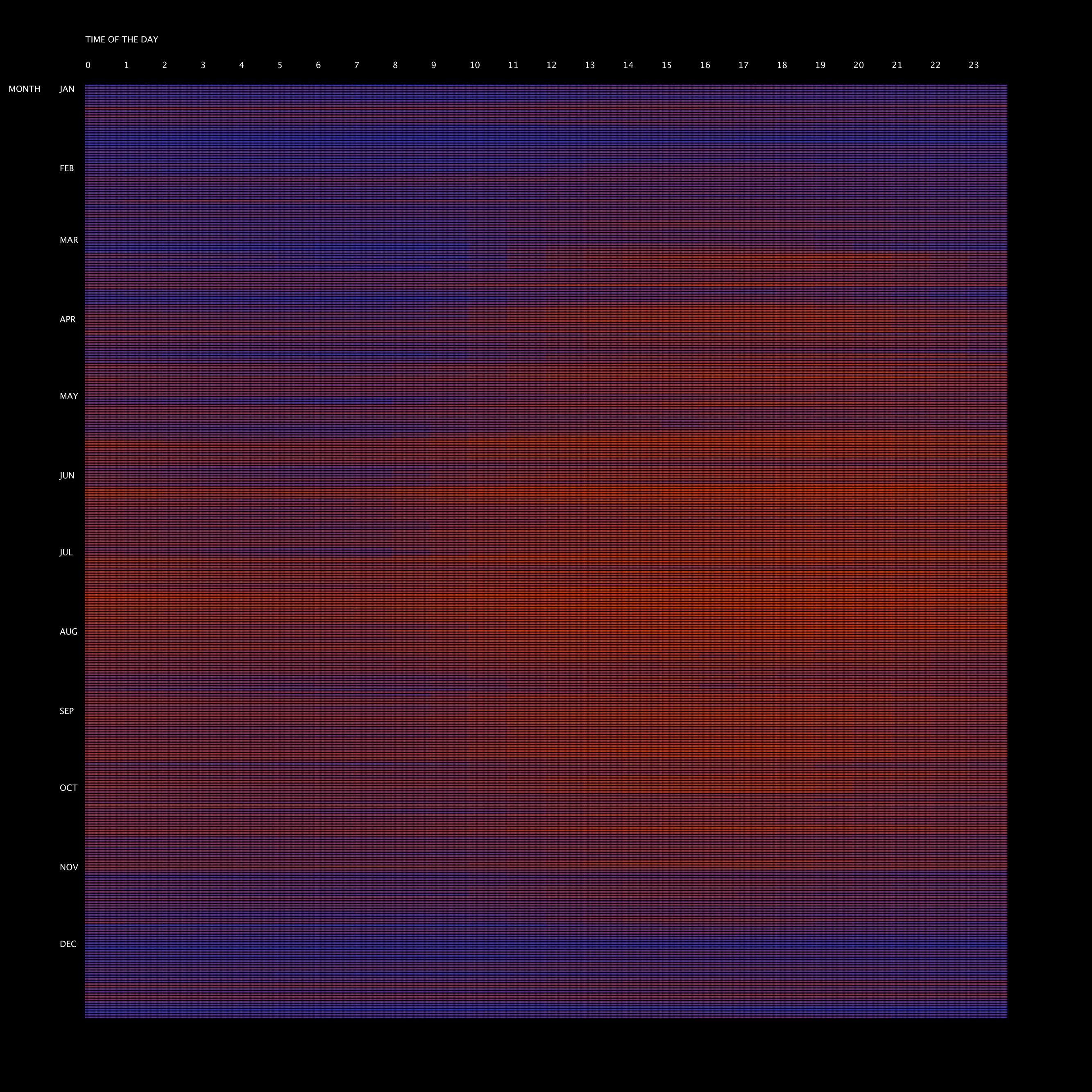 Visualization of temperatures around the passage in Tilburg
Visualization of temperatures around the passage in Tilburg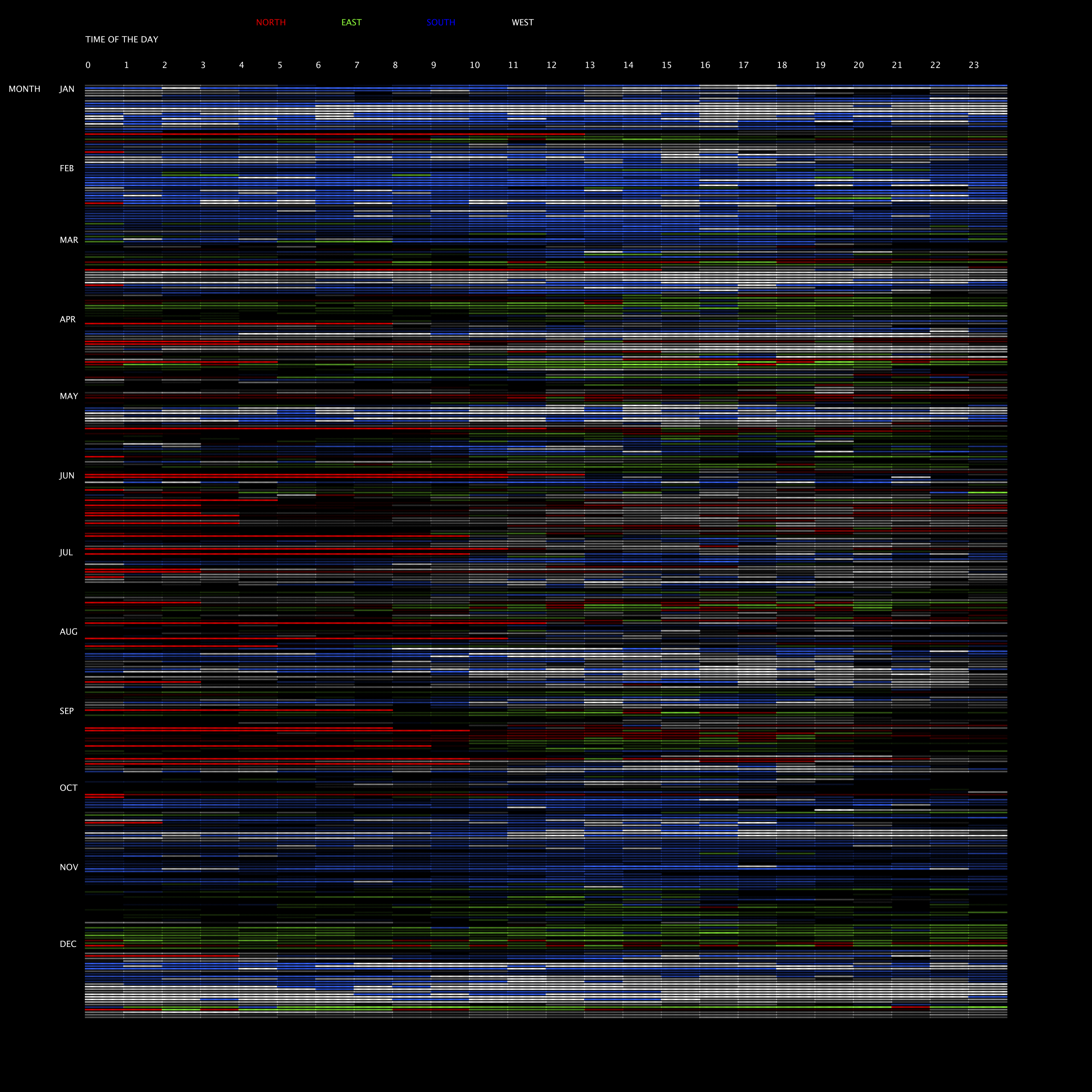 Visualization of types of weather around the passage in Tilburg
Visualization of types of weather around the passage in Tilburg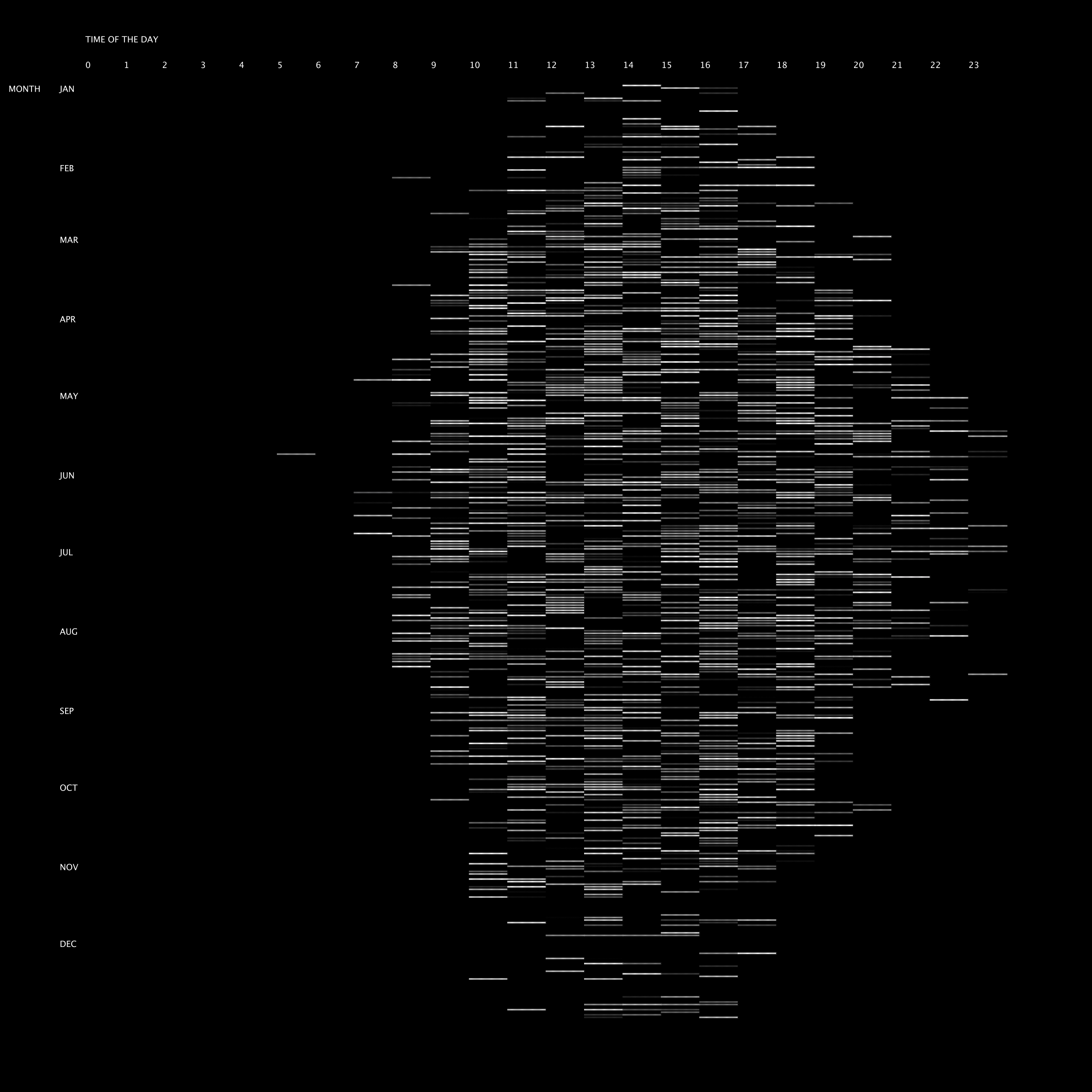 Visualization of clouds above the passage in Tilburg
Visualization of clouds above the passage in Tilburg Visualization of sun hours above the passage in Tilburg
Visualization of sun hours above the passage in Tilburg Visualization of temperatures around the passage in Tilburg
Visualization of temperatures around the passage in Tilburg Visualization of types of weather around the passage in Tilburg
Visualization of types of weather around the passage in Tilburg Visualization of clouds above the passage in Tilburg
Visualization of clouds above the passage in Tilburg Visualization of sun hours above the passage in Tilburg
Visualization of sun hours above the passage in Tilburg Visualization of temperatures around the passage in Tilburg
Visualization of temperatures around the passage in Tilburg Visualization of types of weather around the passage in Tilburg
Visualization of types of weather around the passage in Tilburg Visualization of clouds above the passage in Tilburg
Visualization of clouds above the passage in Tilburg Visualization of sun hours above the passage in Tilburg
Visualization of sun hours above the passage in Tilburg Visualization of temperatures around the passage in Tilburg
Visualization of temperatures around the passage in Tilburg Visualization of types of weather around the passage in Tilburg
Visualization of types of weather around the passage in Tilburg Visualization of clouds above the passage in Tilburg
Visualization of clouds above the passage in Tilburg Visualization of sun hours above the passage in Tilburg
Visualization of sun hours above the passage in Tilburg Visualization of temperatures around the passage in Tilburg
Visualization of temperatures around the passage in Tilburg Visualization of types of weather around the passage in Tilburg
Visualization of types of weather around the passage in Tilburg Visualization of clouds above the passage in Tilburg
Visualization of clouds above the passage in Tilburg Visualization of sun hours above the passage in Tilburg
Visualization of sun hours above the passage in Tilburg Visualization of temperatures around the passage in Tilburg
Visualization of temperatures around the passage in Tilburg Visualization of types of weather around the passage in Tilburg
Visualization of types of weather around the passage in Tilburg Visualization of clouds above the passage in Tilburg
Visualization of clouds above the passage in Tilburg Visualization of sun hours above the passage in Tilburg
Visualization of sun hours above the passage in Tilburg Visualization of temperatures around the passage in Tilburg
Visualization of temperatures around the passage in Tilburg Visualization of types of weather around the passage in Tilburg
Visualization of types of weather around the passage in Tilburg Visualization of clouds above the passage in Tilburg
Visualization of clouds above the passage in Tilburg
Studio
RNDR is a design studio for interactive media that develops ‘tools’ that are only finished by how they are used.
To achieve this, we develop processes, create structures, design visualisations, code programs, and create interactions. The end result can manifest itself across different media, ranging from interactive installations, data visualisations, generative identities, prints and everything in between – often real-time. We are triggered by how information and technology transforms networks, cultures, societies, relationships, behaviours, and interactions between people. Our work explores and engages with hybrid space as it embraces both digital and physical realms.
RNDR was founded in 2017 in The Hague, (NL). Its main members have years of experience as partners, computer scientists, designers, art directors and developers at LUST and LUSTlab.
One of our core projects, and basis for most of our projects, is OPENRNDR, an open source framework for creative coding –written in Kotlin for the JVM– with over 13 years of development. OPENRNDR simplifies writing real-time audio-visual interactive software. OPENRNDR is fundamental for the capacity of RNDR as a studio, as it allows us to realize complex interactive works. OPENRNDR was awarded the Dutch Design Award 2019.
Fields of work
Interactive design (ui/ux), data visualisation, information systems, software tools, interactive installations, media architecture, immersive experiences, interface design, visual identities, generative video, creative coding, exhibition design, graphic design systems, hybrid spaces and platforms, machine learning and artificial intelligence (ai), code and design workshops.
We have worked for or collaborated with
Philips, Audi, Massive Attack, Foto Museum, Autostadt, Stedelijk Museum Amsterdam, DropCity, Google, MoMA New York, IABR, VNG, DoepelStrijkers Architects, Kaan Architects, Buchmesse Frankfurt, European Environment Agency, PARC, Government Summit Dubai, RAP, Technical University Twente, Royal Holloway University, Paradox, Space10, Cooper Hewitt, Hammer Museum, Jacquemus, Holland Festival, RAUM, Civic Architects, The Municipality of The Hague, Vlisco, Police Emergency Center, KPN, Tod’s, Zegna, LI-MA, WTTC, Institute for Future Cities, Makropol, IDFA, UCLA, Artez Arnhem, Ministry of Internal Affairs, Digital Society School, Andrea Caputo Architects, Doesburg vertelt, VNG, Wellcome Trust, Ministry of Economic Affairs, NOI Tech Park, CELEST, Electric Castle, and many more.
Contact
RNDR
Paviljoensgracht 20
2512 BP, The Hague
+31 (0)70.3635776
INTERNSHIPS
Currently, we don’t have any open internship positions or job openings. We appreciate your interest, and we encourage you to check back with us in the future.
OPENRNDR
Open source framework for creative coding that simplifies writing real-time interactive software
